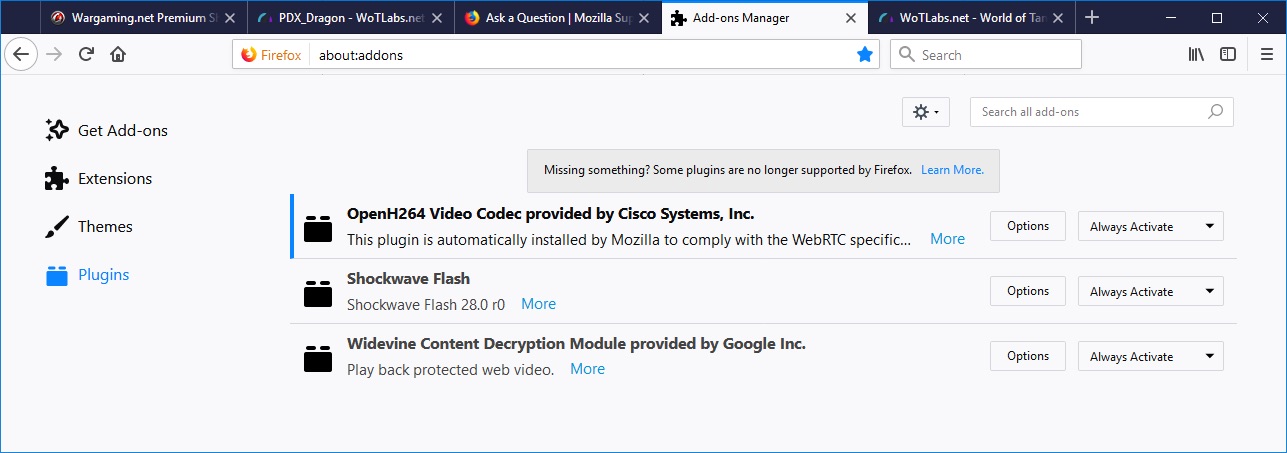Introduction
Firefox is a popular web browser known for its user-friendly interface, robust features, and commitment to user privacy. However, one aspect that can be a source of frustration for some users is the automatic update feature. While updates are essential for security and performance enhancements, there are instances when users may prefer to have more control over the update process. Whether it's due to concerns about compatibility with certain extensions or a desire to avoid interruptions during critical tasks, the ability to stop Firefox from updating can be a valuable option for many users.
In this article, we will explore various methods to prevent Firefox from updating automatically. By understanding these techniques, users can tailor their browsing experience to better suit their preferences and needs. From utilizing built-in browser settings to leveraging advanced configurations, we will provide comprehensive guidance on how to take control of Firefox updates. Whether you're a casual user seeking more autonomy over your browser updates or an IT professional managing a network of Firefox installations, the information presented here will empower you to make informed decisions about Firefox update management.
By the end of this article, you will have a clear understanding of the options available to prevent Firefox from updating automatically. This knowledge will enable you to customize your Firefox browsing experience according to your specific requirements, ensuring a seamless and uninterrupted online experience. Let's delve into the methods for disabling automatic updates in Firefox and explore the possibilities of tailoring the browser's update behavior to align with your preferences.
Disabling Automatic Updates in Firefox
Firefox's automatic update feature is designed to ensure that users have the latest security patches, bug fixes, and new features. While this is beneficial for most users, there are situations where individuals may prefer to disable automatic updates. Whether it's due to concerns about compatibility issues with certain extensions or a desire to have more control over the update process, Firefox provides several methods to disable automatic updates.
Using the Browser Settings
-
Open Firefox: Launch the Firefox browser on your computer.
-
Access the Options Menu: Click on the three horizontal lines in the top-right corner of the browser window to open the menu. From the menu, select "Options."
-
Navigate to the Firefox Updates Section: In the Options menu, select "General" from the left-hand sidebar. Scroll down to the "Firefox Updates" section.
-
Choose Update Options: Under the "Firefox Updates" section, you will find the option to select how Firefox updates are handled. By default, it is set to automatically install updates. To disable automatic updates, select "Check for updates, but let you choose to install them."
-
Confirm the Changes: Once you have selected the desired update option, close the Options tab. Your changes will be saved automatically.
By following these steps, you can effectively disable automatic updates in Firefox using the built-in browser settings. This method provides a straightforward way to customize the update behavior according to your preferences.
Using Group Policy to Stop Firefox Updates
For users in a managed IT environment, Group Policy can be utilized to prevent Firefox updates across multiple devices. This method is particularly useful for system administrators who need to maintain a consistent Firefox version across an organization.
Using about:config to Disable Firefox Updates
Another advanced method involves accessing Firefox's about:config settings to disable automatic updates. This approach provides granular control over various browser configurations, including the update mechanism.
By exploring these methods, users can tailor their Firefox update settings to align with their specific requirements, ensuring a more personalized browsing experience.
In the next sections, we will delve into the advanced techniques of using Group Policy and about:config to further customize Firefox's update behavior.
This section provides a foundational understanding of how to disable automatic updates in Firefox, catering to users who seek more control over their browser's update process.
Using Group Policy to Stop Firefox Updates
In managed IT environments, Group Policy is a powerful tool that allows system administrators to centrally manage and configure the settings of multiple devices. Leveraging Group Policy to control Firefox updates provides a streamlined approach to ensure that all devices within an organization adhere to a consistent update policy.
To stop Firefox updates using Group Policy, administrators can follow these steps:
-
Access Group Policy Editor: On a Windows computer, press
Win + Rto open the Run dialog, then typegpedit.mscand press Enter. This will launch the Group Policy Editor. -
Navigate to Firefox Update Policies: In the Group Policy Editor, expand the Computer Configuration section and locate the Administrative Templates folder. Within Administrative Templates, navigate to the Mozilla folder, then the Firefox folder, and finally the Updates folder.
-
Configure Firefox Update Settings: Within the Updates folder, administrators can configure various update settings, including enabling or disabling automatic updates, setting the update frequency, and specifying whether to check for updates.
-
Disable Automatic Updates: To stop Firefox from updating automatically, select the option to disable automatic updates. This ensures that Firefox will not initiate updates without explicit administrator approval.
By implementing Group Policy to control Firefox updates, system administrators can enforce a consistent update policy across all devices within their network. This centralized approach not only provides greater control over the update process but also helps maintain a standardized Firefox version across the organization, reducing compatibility issues and ensuring a cohesive user experience.
It's important to note that Group Policy management is primarily applicable to Windows-based environments. Organizations utilizing other operating systems may explore alternative methods for centrally managing Firefox update settings across their network.
By leveraging Group Policy to stop Firefox updates, organizations can align their browser update policies with their specific requirements, ensuring a more controlled and predictable update process. This method empowers system administrators to maintain a stable and secure browsing environment while minimizing potential disruptions caused by unexpected updates.
In summary, utilizing Group Policy to stop Firefox updates offers a robust solution for organizations seeking centralized control over their browser update policies, contributing to a more efficient and consistent IT management framework.
Using about:config to Disable Firefox Updates
Accessing Firefox's advanced configuration settings through the about:config interface provides users with granular control over various browser functionalities, including the update mechanism. By leveraging about:config, individuals can customize Firefox's update behavior to align with their specific preferences and requirements.
To disable Firefox updates using about:config, users can follow these steps:
-
Access about:config: In the Firefox address bar, type "about:config" and press Enter. A warning message about the risks of modifying advanced settings will be displayed. Proceed with caution and acknowledge the risks to access the about:config interface.
-
Search for Update Settings: In the about:config search bar, enter "app.update.auto" to filter the relevant update settings.
-
Modify Update Preferences: Locate the "app.update.auto" preference, which determines whether Firefox automatically checks for updates. Double-clicking on this preference will toggle its value, effectively disabling automatic update checks.
-
Adjust Update Interval (Optional): Additionally, users can explore other update-related preferences in about:config, such as "app.update.interval" to customize the frequency of update checks. Modifying these settings allows for a more tailored approach to managing Firefox updates.
By navigating through the about:config interface and adjusting the relevant update preferences, users can effectively disable automatic updates in Firefox. This method provides a high level of customization, empowering individuals to take control of their browser's update process.
It's important to exercise caution when modifying about:config settings, as incorrect configurations can potentially impact the stability and security of the browser. Users should only make changes to settings they fully understand and proceed with care to avoid unintended consequences.
By utilizing about:config to disable Firefox updates, users can tailor their browsing experience to suit their specific needs, whether it involves maintaining a stable browser version for compatibility reasons or simply preferring manual control over the update process. This method offers a deeper level of customization, allowing users to fine-tune Firefox's update behavior according to their preferences.
In summary, leveraging the about:config interface to disable Firefox updates presents a versatile approach for users to personalize their update settings, ensuring a more tailored and controlled browsing experience.
Conclusion
In conclusion, the ability to control Firefox updates is a valuable feature that empowers users and organizations to tailor their browsing experience according to their specific needs and preferences. By exploring the methods to disable automatic updates in Firefox, individuals can gain a deeper understanding of the available options for managing the browser's update behavior.
The built-in browser settings provide a straightforward approach for users to disable automatic updates, offering a simple and accessible method to customize the update process. This method is ideal for individual users seeking more control over their browser's update behavior without delving into advanced configurations.
For organizations and system administrators operating in managed IT environments, leveraging Group Policy to stop Firefox updates offers a centralized and efficient approach to maintaining a consistent browser version across multiple devices. This method not only streamlines the update management process but also contributes to a more cohesive and standardized browsing environment within the organization.
Furthermore, accessing Firefox's advanced configuration settings through the about:config interface provides a high level of customization, allowing users to fine-tune the update behavior to align with their specific requirements. While this method requires a deeper understanding of browser configurations, it offers unparalleled control over Firefox updates, catering to users who seek a more granular approach to managing the update process.
By understanding and implementing these methods, users can effectively prevent Firefox from updating automatically, ensuring a more personalized and controlled browsing experience. Whether it's to mitigate compatibility concerns with certain extensions, maintain a stable browser version for organizational consistency, or simply prefer manual control over updates, the ability to disable automatic updates in Firefox empowers users to align their browsing environment with their unique needs.
Ultimately, the flexibility and versatility offered by the various methods to stop Firefox updates underscore the browser's commitment to providing users with the autonomy to manage their update preferences. By leveraging these options, individuals and organizations can navigate the digital landscape with confidence, knowing that their Firefox browsing experience is tailored to their specific requirements, ensuring a seamless and uninterrupted online journey.

























